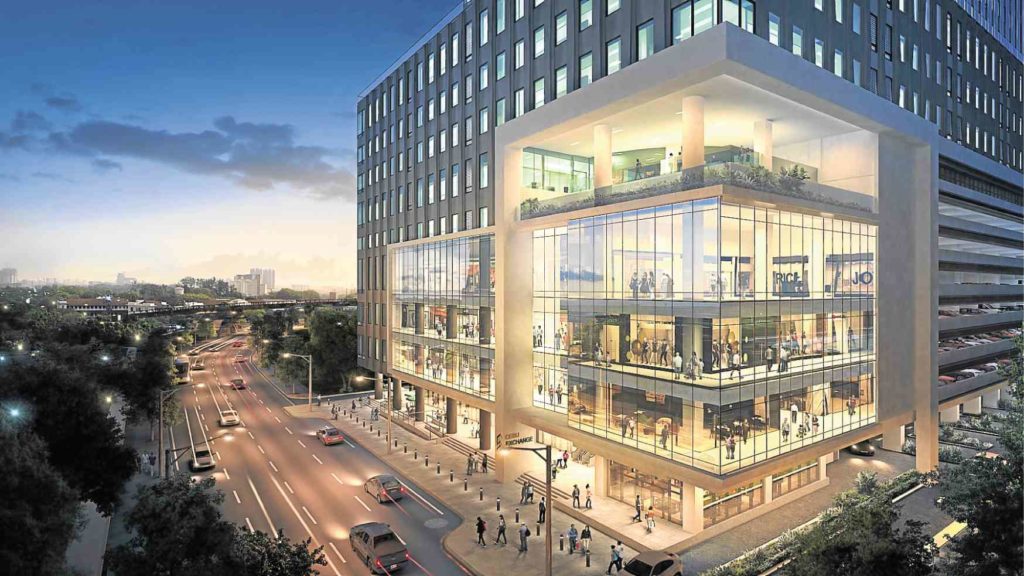
ArthaLand’s Cebu Exchange at the Cebu IT Park is one of the green buildings in Cebu. It is on its way to be certified with BERDE and LEED / CONTRIBUTED PHOTO
Sustainability and environment-friendly practices in the real estate industry is now becoming a norm and not just an option, especially with investors and locators looking for these features in buildings and office spaces they use.
Going green in infrastructure developments is also not anymore about the savings it yields for companies, but more about the resilience, health and well-being of its tenants.
But being a “green building” is not just simply featuring patches of vegetation.
There is actually a national and international standard and certification needed by developers for their projects to be considered environmentally sustainable.
Raymond Rufino, chairman of the Philippine Green Building Council (PhilGBC), urged local developers in Cebu to be certified with PhilGBC’s BERDE or Building for Ecologically Responsive Design Excellence, the country’s own national voluntary green building rating system.
Another choice is the Leadership in Energy and Environmental Design (LEED), a similar rating system developed by the United States Green Building Council (USGBC).
“What matters most is you get your buildings certified (by either LEED or BERDE). It’s the only way people really know you did what’s necessary,” Rufino said during the “Big, Beautiful, and BERDE” forum last Wednesday.
The forum was organized by ArthaLand and ARCH Capital, in partnership with the Urban Land Institute (ULI) Philippines and was held at the Gallery of Cebu Exchange, ArthaLand’s upcoming development in Cebu.
Back in 2010, there were only a “handful” of projects in the Philippines certified by LEED and BERDE. But now, there are over 150 buildings that are registered and rated by both systems.
Certification challenge
Still, Rufino said the number is still not as big considering the hundreds of projects being pursued by different developers all over the country today.
“The challenge with certification is that a lot of people are sort of waiting to be forced to be certified. They say they want to be certified, but getting them to just cross the line to register is difficult,” he said.
Rufino attributed this challenge to the real estate industry being still “very conservative.” Concerns that there may be higher cost or complexities in pursuing sustainable initiatives are keeping the people involved in projects from actually doing so, even if their bosses and executives want them to.
Based on their data, around 25 percent of all LEED-certified properties and 38 percent of BERDE-certified projects and operations in the country are centralized in Taguig City in Metro Manila.
Although he could not definitely say that there are no certified projects in Cebu, Rufino was optimistic that the local real estate industry will soon pick up on this trend, which is becoming one of things that investors look for.
“The trend of sustainable spaces and green buildings is not only geared towards attracting investors, but most importantly, targets the improvement to the quality of life and propel business forward,” he added.
With limited land resources in Metro Manila areas like the Bonifacio Global City, Ortigas, and Makati central business districts, Rufino said Cebu presents room to grow and is emerging as an attractive place for real estate developers to pursue brand new, green investments.
Cebu Exchange
One such developer is ArthaLand which is constructing its latest signature office tower – the Cebu Exchange located along Salinas Drive and right across the Cebu IT Park.
The 39-floor development is set to be the first office development in Visayas and Mindanao to be on target in achieving a dual green building certification from USGBC’s LEED and PhilGBC’s BERDE.
ArthaLand Corp. Executive Vice President and Treasurer Leo Po said during the same forum that they want to promote sustainable development with their entry in Cebu. ArthaLand’s other developments in Metro Manila have also been LEED and BERDE certified.
“In the last eight years, the thrust towards sustainable development has grown 15 times. And we see that trend continuing. We’d like to bring the sustainable standard we espouse to the Cebu market,” Po said.
The P8-billion development stands in an 8,440-square meter property. It will have a gross floor area of 108,500 square meters and a net sellable area of 88,300 square meters.
The buildings design concept is inspired by salt crystals, which is reflective in the buildings structure which looks like large salt crystals on top of each other.
Po explained they took the inspiration from the word Salinas, from Salinas Drive, which means salt beds in Spanish. The floors are divided into three zones.
The low zone will feature a wide open area of about 5,000 square meters per floor and is ideal for large BPO operations.
The mid zone floors are about 3,000 square meters and may accommodate mid-sized voice-based BPO and non-voice knowledge process outsourcing (KPO) companies. The prime high zone, may be utilized for regional businesses based in the VisMin area.
Four floors of the building will be dedicated to retail spaces. It will also have two levels of basement parking.
“We want to create a business ecosystem wherein instead of travelling or walking, you can do everything inside the building. This is aimed to reduce carbon footprint so you don’t need to drive your car to go somewhere,” Po said.
The retail spaces will include a gym, a bank, food retail, courier services, and other supporting services.
The building will feature energy-saving and water-saving systems. It will also have an efficient and optimized building envelope that is double-laced to reduce the amount of heat that goes into the building as well as reduce the amount of noise.
It will also have a water-efficient plumbing system, low energy air-conditioning system, a materials recovery facility and its own rainwater system where they collect rainwater, filter it, and use it for flushing and landscaping.

